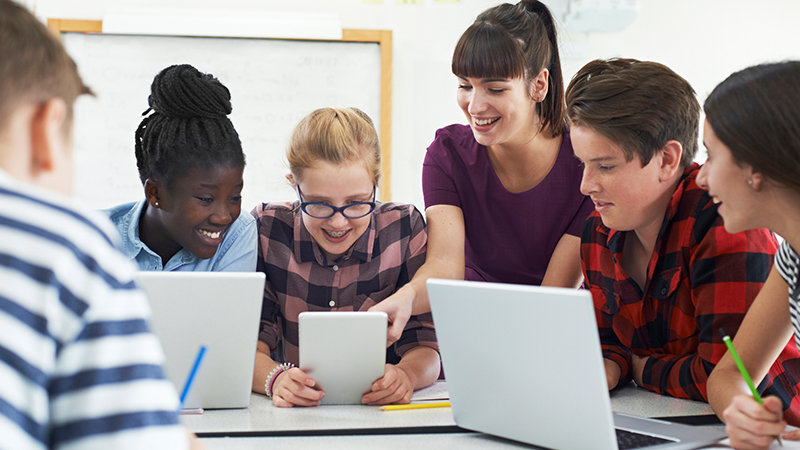As you begin 2017, make it a goal to try new things in order to enhance your teaching and increase student engagement. One way to do this is by taking advantage of new technologies. By incorporating technology more regularly in your classroom, you will immediately energize your teaching and positively impact your students’ learning experiences. Let’s take a look at some technology you can use in your Pre-K-12 classrooms that will help you create engaging, real-world learning experiences.
Augmented Reality/Virtual Reality
As teachers, we want to expose our students to creative, hands-on learning experiences. One way to do this is to use virtual reality to “visit” places around the world. Imagine taking your students on a virtual trip to ancient Rome or on a deep-sea adventure to explore the Great Barrier Reef! With virtual or augmented reality technologies, these adventures are literally at your fingertips. Augmented reality brings educational experiences and lessons to life by creating 3D figures in a 360-degree virtual environment using enhanced images, graphics, and/or sensations.
Virtual reality experiences provide artificial, computer-generated simulations of real-life situations. While they serve different purposes, both technologies enhance and enrich educational experiences.With online programs like Google Expeditions or educational apps such as Aug That! you can bring live, active learning experiences to your students quite easily. Google Expeditions provides students with virtual reality experiences, a guide for the expedition, and a virtual reality viewer through the use of a tablet. Aug That! is a dynamic augmented reality app offering animated lessons and activity sheets that fit the specific needs of your learners. In addition, if you are a science teacher, you may want to explore Daqri’s Anatomy 4D augmented reality app, which allows students to view a 4D model of the human body and various biological systems.
Finally, Virtual Reality Education Pathfinder (VERP) provides students with the opportunity to research and design their own virtual reality programs.
3D Printing
3D printing allows you and your students to create three-dimensional solid objects from digital files. Although 3D printing has been available and widely used across Pre-K-12 schools for a while, the technology was very expensive. Now, however, 3D printers have become much more affordable and accessible, making them a hot ticket item for school districts looking to bring creative real-world experiences into classrooms. Consider using MakerBot grants to help your school gain funding to purchase 3D printers for your classroom. Use these lessons plans from MakerBot to jumpstart the 3D printing experience in your classroom.
Smart Phones
Instead of asking students to put their phones away, plan ways to integrate smart phones into your lessons. Creating a mobile-friendly environment can actually increase engagement and teach students important skills about using their devices to access information and improve organization. Check out this NEA blog by a veteran teacher to see how he harnesses the power of technology in his classroom by encouraging students to use their smart phones to increase productivity and efficiency. In addition, learn more about how to use smart phones to create interactivity by reading this EdWeek article. Just like with any tool, make sure to set clear expectations and guidelines about how and when to use it.






